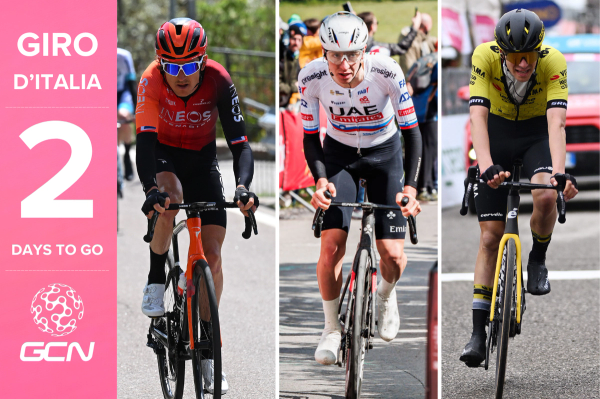A beginner's guide to Paris-Roubaix 2024
Everything you need to know about the 'Hell of the North'
GCN
The GCN team
© Getty Images
Paris-Roubaix, in all its mud-splattered glory
The third Monument of the season, and the ‘Queen of the Classics’ is just days away, with the men’s and women’s Paris-Roubaix taking place on Saturday and Sunday.
The so-called ‘Hell of the North’ is one of the most iconic races of the season, tackling the brutal cobbled roads of northern France in what is an always challenging and unpredictable spectacle. Here’s everything you need to know about this one-of-a-kind race.

© Getty Images
There aren’t many races more iconic or well-known than Paris-Roubaix or, as some like to call it, the ‘Hell of the North’.
Bienvenue en enfer – welcome to hell. That’s the message that greets the riders when they line up for the start of this epic one-day race, and it couldn’t be any more appropriate. With 29 sectors of bone-rattling cobblestones to navigate over the course of 260km in the men’s race and 17 sectors over the course of 148km in the women’s, it’s no wonder Paris-Roubaix has earned itself so many daunting nicknames.
The race is not a descent into hell for all, however, and for those who are successful on the cobbles, it’s almost a journey into the divine. Henri Pélissier said this after taking his first of two victories in the event in 1919: “This wasn’t a race. It was a pilgrimage.”
Like the Tour of Flanders that falls just a week before, Paris-Roubaix is one of the races on the cycling calendar that captures the real essence of bike racing. It’s a race that captures a rider’s heroism, their bravery in the face of adversity and – most of all – their sheer mettle and will to win at all costs. From broken bikes to broken dreams, we’ve seen it all on the cobblestones that lead towards the famous finish in the Roubaix velodrome.
Paris-Roubaix route and cobbles sectors
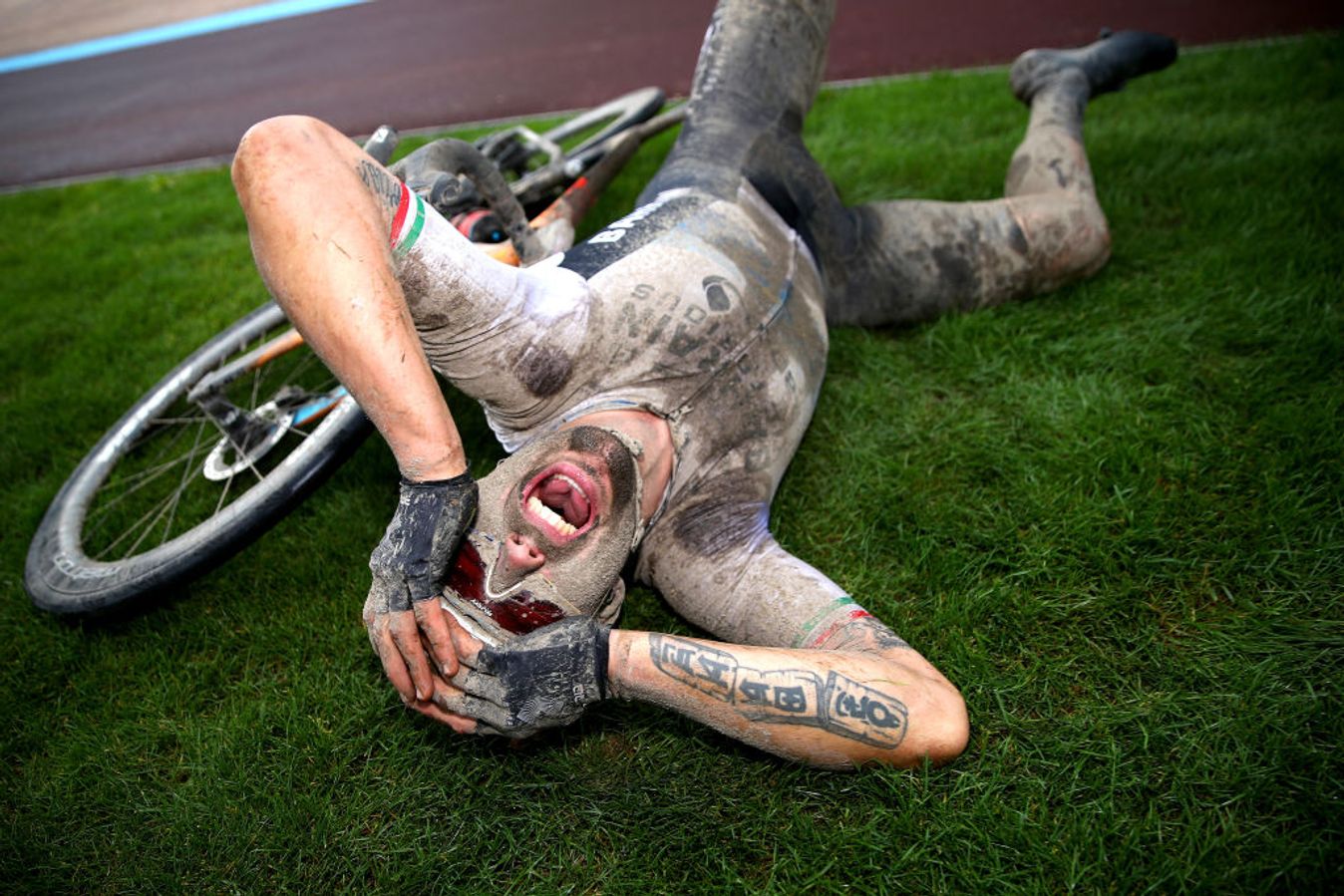
© Getty Images
Sonny Colbrelli realises a lifelong dream at the 2021 Paris-Roubaix, a muddy edition that is set to go down as one of the best in the race’s long history.
The race is one of cycling’s oldest, with the men’s race debuting back in 1896, and by far one of the most prestigious, earning it the nickname, the ‘Queen of the Classics’. It’s often compared to the other cobbled Monument, the Tour of Flanders, but in reality the two are very different.
Not only are the cobbles a lot smoother in Flanders, they’re also raced over several times throughout the year, diluting the spectacle somewhat. The cobblestones in Paris-Roubaix, on the other hand, are 10 times as savage and are usually reserved for this one weekend in April – and occasionally a controversial inclusion in the Tour de France – making for a truly special day of racing.
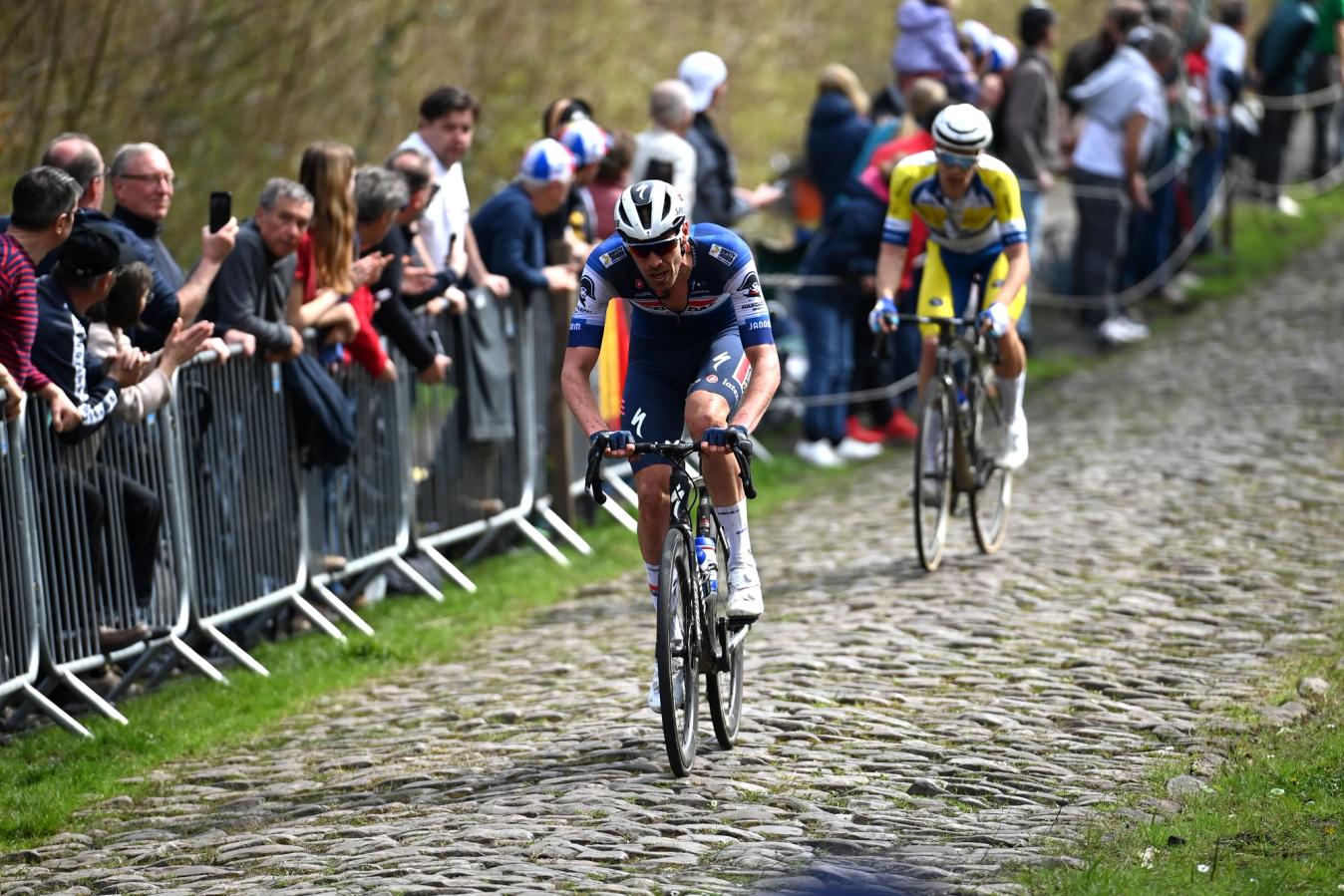
© Getty Images
The cobblestone sectors found in this small area of northeast France are amongst some of the most savage sectors of road found anywhere in the world.
Over the last century, the route has been tweaked as older roads are resurfaced and organisers seek out new and even more hellish cobblestone sectors to send the riders over. While some sectors chop and change over each edition, the real brutish ones remain fixed on the route.
Sectors like the Trouée d'Arenberg, Mons-en-Pévèle and Carrefour de l'Arbre are to Paris-Roubaix what the Col du Galibier, Alpe d’Huez and Mont Ventoux are to the Tour de France; they define the race and sort the contenders from the pretenders. Each cobblestone sector is assigned a star rating, with one star marking the easiest sectors and five stars the most brutal.
The Carrefour de l'Arbre is the final five-star sector of cobbles in both the men’s and women’s races, falling within the last 20km. If a rider hasn’t managed to break free of the leading group by this point, it’s up to the Roubaix Velodrome to decide the winner. Riders complete one-and-a-half laps of this outdoor velodrome at the end of the race, making for one of the most iconic and exciting finishes seen anywhere in the world.
The women’s race follows an almost identical route to that of the second-half of the men’s race, picking up the men’s route just after the Trouée d’Arenberg sector and following it all the way towards the iconic finale in the Roubaix Velodrome. No fewer than 17 sectors feature on this 148.5km route which, when added together, amount to 29.2km on cobblestones.
Paris-Roubaix cobble sectors
Bold sectors included in women’s race
- 29: Troisvilles to Inchy, 2.2km ***
- 28: Viesly to Quiévy, 1.8km ***
- 27: Quiévy to Saint-Python, 3.7km ****
- 26: Viesly to Briastre, 3km ***
- 25: Vertain to Saint-Martin-sur-Écaillon, 2.3km ***
- 24: Capelle to Ruesnes, 1.7km ***
- 23: Artres to Quérénaing, 1.3km **
- 22: Quérénaing to Maing, 2.5km ***
- 21: Maing to Monchaux-sur-Ecaillon, 1.6km ***
- 20: Haveluy to Wallers, 2.5km ****
- 19: Trouée d'Arenberg, 2.3km *****
- 18: Wallers to Hélesmes, 1.6km ***
- 17: Hornaing to Wandignies, 3.7km ****
- 16: Warlaing to Brillon , 2.5km ***
- 15: Tilloy to Sars-et-Rosières, 2.4km ****
- 14: Beuvry-la-Forêt to Orchies, 1.4km ***
- 13: Orchies, 1.7km ***
- 12: Auchy-lez-Orchies to Bersée, 2.7km ****
- 11: Mons-en-Pévèle, 3km *****
- 10: Mérignies to Avelin, 0.7km **
- 9: Pont-Thibault to Ennevelin, 1.4km ***
- 8a: Templeuve (L'Epinette), 0.2km *
- 8b: Templeuve (Moulin-de-Vertain), 0.5km **
- 7: Cysoing to Bourghelles, 1.3km ***
- 6: Bourghelles to Wannehain, 1.1km ***
- 5: Camphin-en-Pévèle, 1.8km ****
- 4: Carrefour de l'Arbre, 2.1km *****
- 3: Gruson, 1.1km **
- 2: Willems to Hem, 1.4km **
- 1: Roubaix (Espace Charles Crupelandt), 0.3km *
Paris-Roubaix history and previous winners
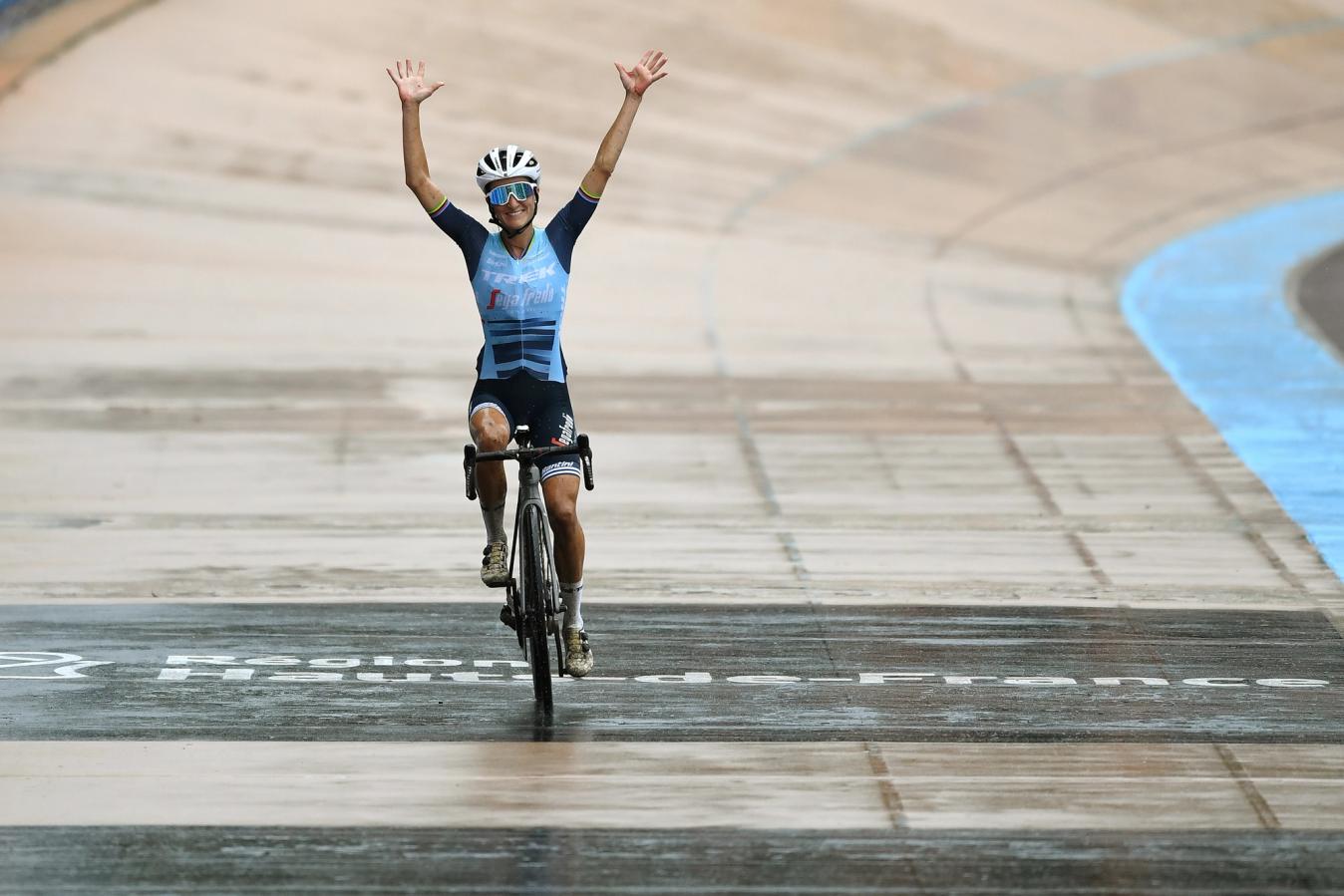
© Getty Images
Lizzie Deignan crosses the line on the iconic Roubaix Velodrome and writes her name into the race’s history books as its first ever female winner.
While the men’s race is one of the oldest on the annual cycling calendar, the women’s is one of the newest, having hosted its inaugural edition in 2021, making this year only the fourth edition, compared to the men’s 121st. The first-ever women’s race was originally due to take place in April of 2020, but due to the COVID-19 pandemic it was postponed.
These postponements only heightened anticipation for the event, with many touting it as a turning point for not only women’s cycling, but the sport in general. The race didn’t disappoint and duly delivered everything that was expected of it, and then some. Great Britain’s Lizzie Deignan won the inaugural race with a heroic solo performance fitting of such a landmark edition – writing her name into the race’s history books as not only the first ever female winner, but also the first British winner, male or female.
Since then, her Trek-Segafredo – now Lidl-Trek – team won again with Elisa Longo Borghini in 2022, before Canada’s Alison Jackson took a memorable win from the day’s early breakaway in what was an exciting and unpredictable finale to the race in 2023. Classics superteam SD Worx-Protime have yet to win the race, with Marianne Vos also missing a cobblestone that would arguably complete her already extraordinary palmarès.
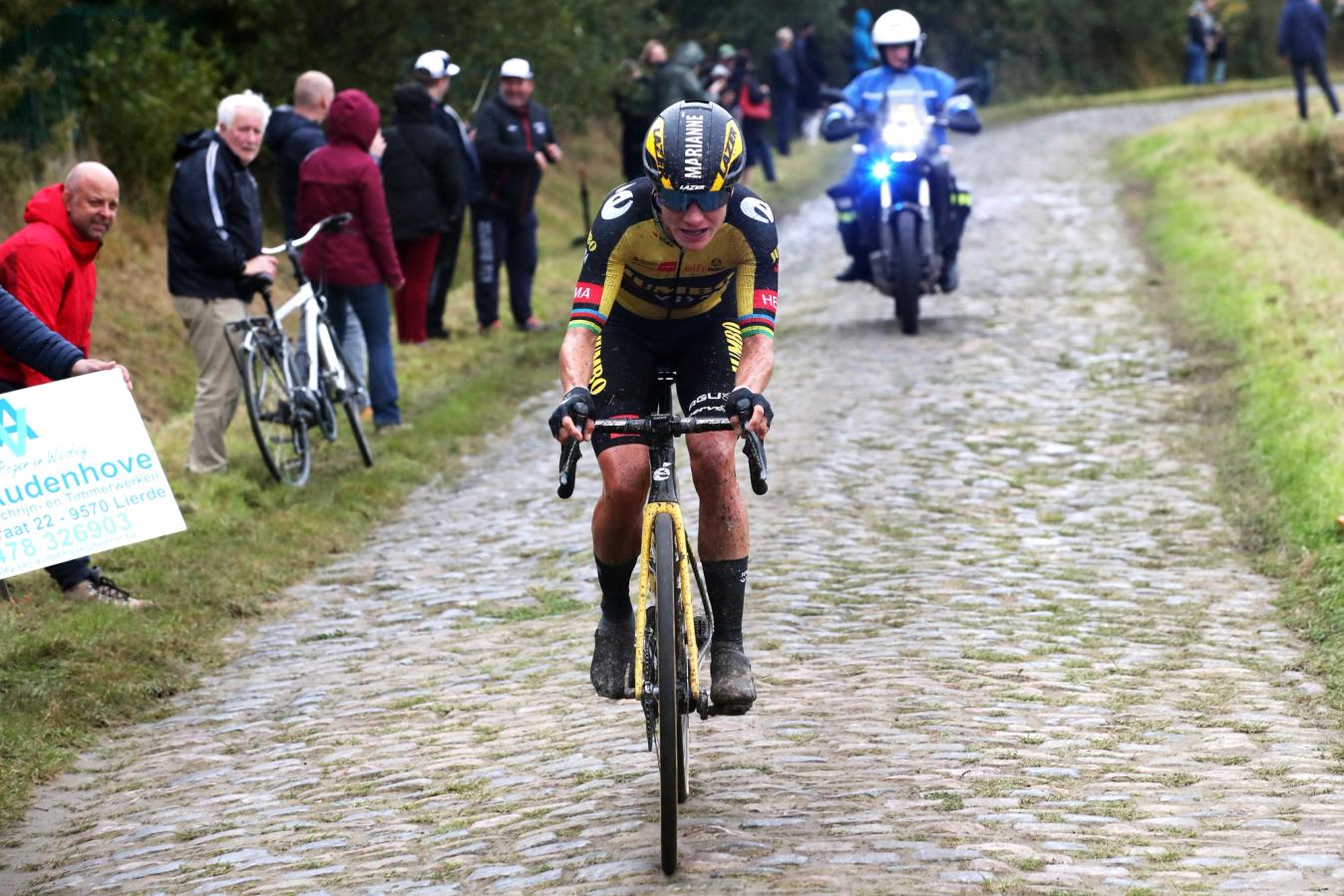
© Getty Images
Like the men, the women are also tasked with conquering several of Northern France’s most unforgiving sectors of cobblestones, like Mons-en-Pévèle and Carrefour de l'Arbre.
Despite being a French race, the men’s Paris-Roubaix winners list is dominated by the Belgians, with the neighbouring nation taking 57 victories in the event, most recently through Philippe Gilbert in 2019. The French may have 28 wins to their name but it has been 27 years since their last one, which came courtesy of FDJ’s Frédéric Guesdon in 1997.
Two of Belgium’s most esteemed Classics riders stand on top of the winners list with four victories each: ‘Monsieur Paris-Roubaix’ himself Roger De Vlaeminck and his successor Tom Boonen. Boonen is one of only two riders to have won this race and the Tour of Flanders in the same year twice, the other being his arch racing rival from the 2000s and 2010s, Fabian Cancellara.

© Getty Images
Tom Boonen takes his fourth Paris-Roubaix title and equals the long-standing record previously set by Roger De Vlaeminck.
Over the past 10 editions of the men’s race, three have been won by a solo rider and three have ended in a sprint between just two riders. The largest group we’ve seen enter the velodrome to contest the finish together over the last 10 editions was six, back in 2015.
In the women’s race, the first two editions were solo winners – Deignan from a long way out, and Longo Borghini from 34km to go – whilst 2023 came down to a sprint between the breakaway after the peloton failed to close down the early move. These results emphasise how incredibly attritional this race can be, and just finishing it is considered a career-defining achievement by many riders.
How many will reach the finish together in the men’s and women’s races this year? Who’ll emerge victorious once the dust has settled? And can a French rider finally end their nation’s two-decade-long winless drought? All will become clear on Saturday and Sunday.
See the Paris-Roubaix 2024 start list on the race page.










%20(2).webp?w=600&auto=format)
